Once leaving Costa Rica behind, we finally reached our final destination of Central America—Panama.
Panama, like many other Central American countries, is a land of contrasts, a rich culture and history, as well as endless beauty; however, it’s also a key spot for worldwide trade thanks to the Panama Canal, situated in the narrower area of the Isthmus of Panama. In the Pre-Hispanic era, the Isthmus of Panama was already a trading route amongst indigenous tribes of Central and South America, whose roots date as back as 2,500 BC. In 1501 AC, the first Europeans arrived in the isthmus, changing Panama’s fate forever. Initially, Panama was connected to Colombia, but its ties were always precarious and finally ended when the French and American governments became interested in the isthmus for the project of building a canal. In 1903 Panama and Colombia officially separated their governments, and the US declared its use of the Isthmus of Panama. The canal was built by the US from 1904 to 1914 (nevertheless, the French are the ones who started the project), and in 1999, the Americans transferred the complete control of the canal to the Panamanian government. Nowadays, the Panama Canal is one of the most famous attractions of the country, as well as an exceedingly important part of its economy.

Bocas Del Toro
After crossing the Costa Rica/Panama border, we drove a couple of hours to one of the most well-known destination of the Caribbean Coast of Panama: Bocas Del Toro. Since we didn’t want to take the rv (aka, our home) to the islands, we spent the night in Almirante (slept at the fire station) in order to grab the next day’s morning ferry to Isla Colon. Bocas Del Toro is an agglomeration of islands, many of which are deserted, and home to reefs, and abundant fauna and flora. The archipelago is very laid-back, like all islands I know, and easy to get around by boat. Unfortunately, we only spent one day in Bocas and to be honest…it was a bit cloudy; thus, we weren’t able to see all of the highly-talked-about turquoise colors of the ocean. Nevertheless, here are a couple of tips for someone on a tight schedule, but still want to explore the islands to their maximum! The boat ride from Almirante to Isla Colon was quite pleasant for the most part—after leaving the port, where, unfortunately, the water was filled with trash—and not extremely long, zig-zagging along the dark-green isles of mangroves. Once arriving in Isla Colon, we quickly stopped at Amaranto Café, which offered delicious lattes and sandwiches (the perfect to-go lunch options for day trips). Shortly after we hoped on a tiny boat and toured around the numerous keys, some of which were very isolated, and then stopped for snorkeling. In one of the islands we visited, we spent the majority of the time collecting trash off the beach—a mini beach clean-up. For those looking for tours, there are numerous options of tours throughout the archipelago, thus, do a little research before going and talk with the guides/tourist companies about the attractions (we paid about $25/person in ours, and visited 3-4 sites).
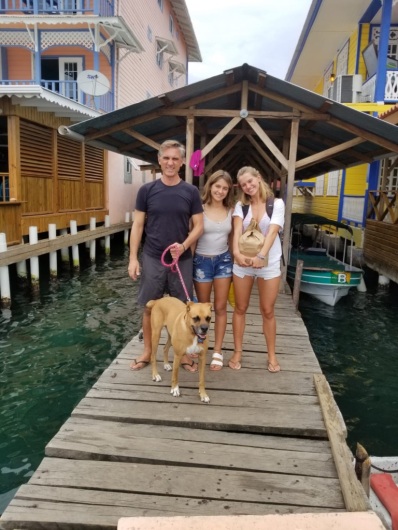




Boquete
Going to Boquete radically changed our endless-tropical-trip due to its high elevation of 2,800 m (9,200 ft) and mountainous landscape dotted by coffee plantations. From all the places we visited in Panama it was by far my favorite! Besides the enormous contrast from living months in sunny, humid coast to the cold mountains, and switching from coconut trees to coffee bushes, Boquete had the best rv campground (in terms of facilities) I had seen in Central America: Panama Camping. We stayed a few nights relaxing and enjoying the warm showers (those are very rare), as well as indulging in the sweets and coffee from Malup Café, which was situated in the campground. The little town is widely known in Panama for producing high quality coffee due to its cool climate and rich volcanic soil, and world widely famous for its gourmet coffees, one of them being the Geisha Coffee. The Geisha Coffee bean is a variety of Arabic coffee, and is considered to be one of the most expensive coffees in the world—a shot can cost $15, a pound was auctioned recently for $803, and geisha is favored by many prominent people in the world, such as Japan’s emperor.
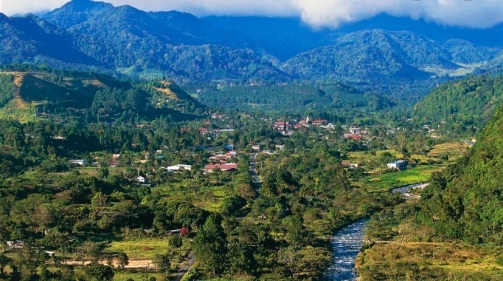
Anyways, besides drinking loads of freshly-grounded coffee, we explored the region by hiking Sendero Los Quetzales in Volcan Bauru National Park. If you are wondering what a “quetzal” is, well, it’s a multicolored bird with a long tail and spiked-up feathers on the head, and it’s Costa Rica’s national bird (and seemingly very popular in Panama too). In order to hike the trail, we woke up very early and walked to Boquete’s downtown to grab an autobus coletivo, also known as mini bus ($3/person), which took us on a ride across the mountains and coffee plantations, eventually dropping us off at the national park. The quetzales trail was gorgeous -–imagine a fairytale forest—and took us about 6 hours to hike to the lookout and go back (10 km total with 700 m of elevation gain). On our way back, we missed the mini bus by 3 minutes (it comes every hour) and I had a little meltdown since we hadn’t eaten anything in 7+ hours; however, a very kind elderly couple offered us a ride back to Boquete—gotta love Panamanians! Golden tip, if you are famished and craving burgers and fries pay a visit to Big Daddy’s, a Cuban/American restaurant.


Panama City
Panama City really surprised me with its “Miami Style”: beachfront skyscrapers, huge hotels, loads of traffic, and lots of attractions. Fortunately, we parked in a quiet hostel situated in an older neighborhood. Besides all the touristing, we had to get our house ready to be shipped off to South America (from Colon, Panama, to Cartagena, Colombia)—so Panama was half pleasure, half hustle.
On our first morning, we walked around Amador Causeway, a man-made “bridge” linking four tiny islands: Naos, Perico, Culebra, and Flamenco. The site is the perfect place to walk/jog/bike and to observe the city from afar, as well as finding a place to eat; I recommend Beirut, a delicious Arab restaurant. Also, nearby there is the Biomuseo, which depicts Panama’s biodiversity. A must-go when in Panama City is the Miraflores Locks, where we were able to see the old Panama Canal’s locks—originally designed by Leonardo Da Vinci—and how they operated first-hand; additionally, the museum offers an Imax movie of the locks’ history, and how the great canal emerged.


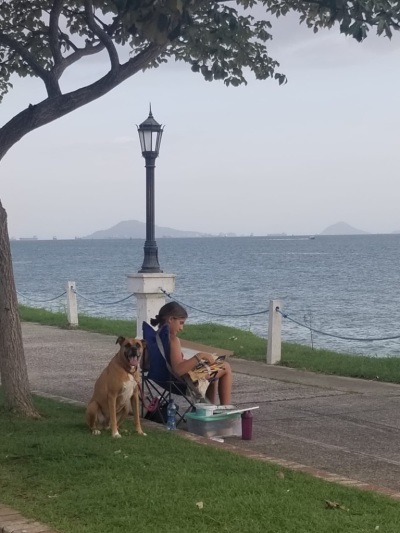
Even though I loved all of the above attractions, my absolute favorite was Old Panama City—better known as Casco Viejo (an UNESCO heritage site). This historical section of the capital is like traveling back in time to the days of the 17th century, when the Spaniards still ruled over Panama and the city was the bridge between South American gold and Europe. Casco Viejo is a true example of Spanish colonial architecture—with many houses being built in the 18th century—and may take a couple of days to be fully appreciated. I highly suggest visiting the Museo Del Canal, which relates the history of Panama and, of course, how the Panama Canal was built first by the French, and finished by the Americans (2-3 hours of tour). Also, one must see the heart of the historical downtown, the Metropolitan Cathedral—a white colonial catedral erected in 1796. With many hours of walking, photographing, and learning, of course I got hungry and went hunting for delicious spots…the chosen one being Nazca 21, a great Peruvian restaurant near the plaza; additionally, Lessep’s Bistro (French food) had tasty coffee and desserts.
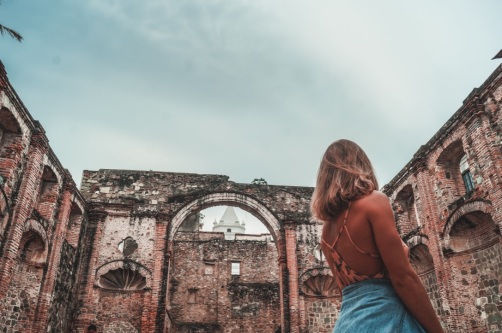


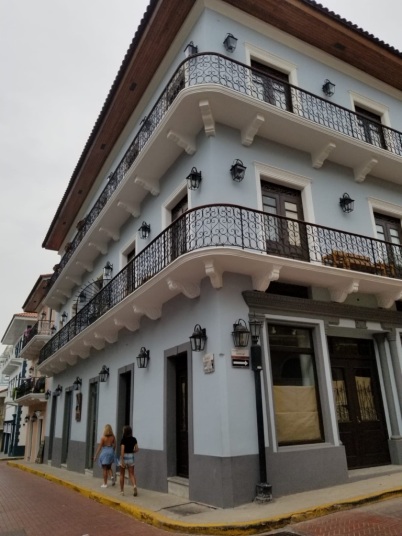



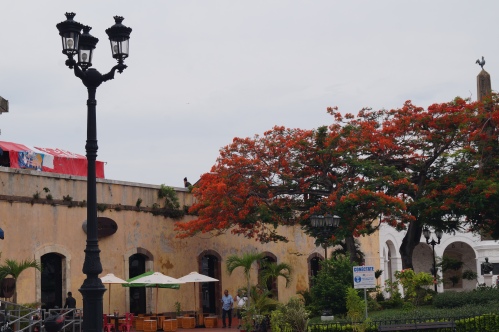

Little story from our time in Panama:

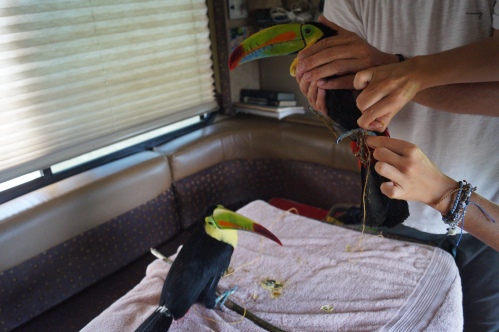
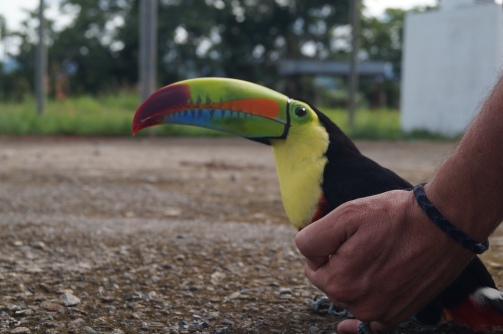





Ótimo trabalho Anna!
LikeLiked by 2 people
Ola Anna !
I am following your adventures and discoveries. Your pictures are superb and your writing has a lot of useful and fun information. It is almost as I was there 😉 wish I was;)
Excellent !!!
Looking forward to your next postings !
LikeLiked by 1 person
Ola Gabriela,
I’m so happy that you enjoy the blog, and can feel as if you were there–that’s my intention(;
LikeLike
Boa Anna ! Belas fotos !
LikeLiked by 1 person
Obg, venha nos visitar!(:
LikeLike
Excelente artigo Ana! Envolvente e rico em detalhes. Parabéns
LikeLiked by 1 person
Muchas gracias, me alegro que le gusto!
LikeLike
Otimas fotos e excelente redação!!
LikeLiked by 1 person
que bom que vc gostou(:!
LikeLike
Que legal Anna!!! Adorei o texto, amei as fotos! Ficou show, parabéns!!!!
LikeLiked by 1 person
Obg Leila, bjao!!
LikeLike
Ana, primeira vez que leio seu relato de viagem. Parabéns, coerente artigo, envolvente leitura. Continue nos presenteando com suas descrições e emoções. Abçs. Arlete
LikeLiked by 1 person
Muito obg Arlete, fico super feliz que voce curtiu o blog e os textos. Bjos!!
LikeLike